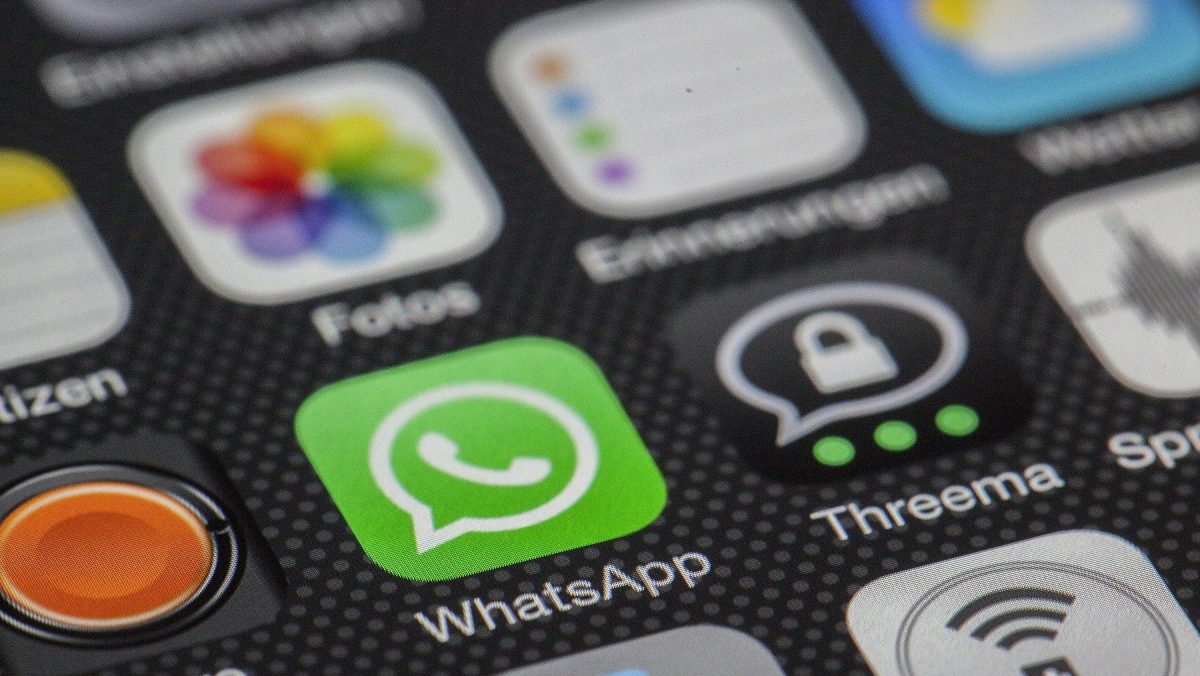To simplify things, there are three currents: the prohibitionist or neo-luddite (“don’t give access until 18”), the restrictive (“let’s set age limits and conditions”) and the libertarian (“free access and self-regulation”). Fortunately, when we dig a little, we find that there are some ideas on which all three groups are more or less in agreement. Let’s go first to these consensuses and to the evidence on the matter, because from both it is easier to try to structure a diagnosis and some proposals.
Developmental interference
There is broad agreement among clinical psychologists and educationalists that the constant presence of mobile phones in children’s lives interferes with their development, and also that this interference begins to be noticed even in the pre-school stage (before the age of 6). In 2023, the Associació Catalana de Llars d’Infants (nurseries) conducted a survey in 110 nurseries in its network: in 80% of the centres a clear correlation was detected between the time of overexposure to screens and the level of overall developmental delay of the child, and, compared to some previous studies, it was also found that the clarity of this correlation is increasing every year.
The Spanish Society of Neurology points out that so far it has not been possible to verify structural changes in the brain resulting from the use of mobiles, but it should be borne in mind that the period elapsed and under study is still short and does not provide a sufficient basis.
However, they do point out that there is already evidence of increased anxious or depressive symptoms and impaired attention span. For the moment, these symptoms are attributed to the time spent playing and not to the content itself (for which there are still no detailed analyses), and the experts have not yet detected any differences with the phenomena recorded at the peak of video game use at the beginning of the century.
Along the same lines, the Unesco GEM 2023 report points out that unlimited mobile phone use has a negative impact on diet, sleep, mental health and eye health, and is also a cause of a sedentary lifestyle, all of which translates into the appearance of depressive symptoms and poorer academic performance.
According to a survey by the Spanish Society of Paediatrics carried out in 2016 (and whose results, eight years later, we fear they can only have got worse), 7 out of 10 children in primary school – aged between 6 and 12 – eat lunch or dinner with a screen in front of them. Clinical psychologist Francisco Villar, one of the leading voices in the field, uses this as an example to point out that this widespread family habit, which may seem common and innocent, immediately translates into manifest deficiencies in children, who do not acquire the tools of emotional management, tolerance to frustration, waiting and boredom, etc. …. that can normally be developed at these ages.
The screen is used as a resource for the child to eat or be quiet on a trip or in a restaurant, but this [supposedly] helpful tool is actually interfering with the development of the resources the child needs to cope with everyday life, and is disabling the child from developing his or her own resources of patience, acceptance of limits, use of the imagination and ability to entertain alone. And all this without even going into the content they may be watching (we’ll come to that in a moment).
Group membership and digital validation
In primary school, the group and friends are still not the most important thing, but if we move to the adolescent segment, where they are, we see that nowadays for them the real group is no longer the physical one, the one in the playground or the street, but the digital one: whoever is not on a certain platform no longer belongs to the group and no longer receives the digital validation of the rest, that approval and social acceptance that, with its own problems, used to be won face to face on the bench in the square and that now is only obtained on networks. This servitude makes it impossible for many minors not to be present on the networks, and even if they are, they accept what emanates from the networks without any discrimination and as a toll of belonging to the group, even accepting the online harassment that sometimes comes in response.
Already, studies conclude that adolescents who spend more time in front of screens are more likely to develop mental health problems, and that this is beginning to translate into profound levels of unhappiness, low self-esteem, feelings of loneliness and a steadily increasing prevalence of suicidal ideation – the latter of which nearly a third of teenagers in the US admitted to having had in 2021.
With adolescence, the problems caused by a screen in front of a young child while eating are compounded by others, and together they result in major difficulties in the acquisition and successful use of basic coping skills: poor understanding of information and images, failure to acquire critical thinking (and often not even the habit of thinking, because it is easier to look something up than to try to deduce or remember it), credulity in the face of misinformation and propaganda, poor understanding of the difference between fact and fiction, deficient understanding of sexuality, normalisation of gambling, compulsive shopping, huge deficiencies in the development of social skills of relationship and empathy, lack of attention and concentration, which disqualifies for in-depth reading, school failure, lack of domestic discipline, etc. … Unfortunately, the list is long.
It can be said that many of these problems also affect adults. That is true, there is no denying it, but we adults are supposed to have a certain maturity, experience and ability to contrast and, above all, an awareness of our responsibility for our own actions.
It was commonplace – albeit without sufficient scientific support – to say that children were already digital natives, that their brains would develop differently and that their multitasking skills would make them capable of processing information through digital media more efficiently than with the analogue medium of paper. This commonplace, multiplied by one’s environment, led most families to hand over a mobile phone to their young children without prior reflection and without thinking about the possible harms. Schools also opened their doors to the new devices, and it seemed a good option to use a mobile phone or tablet there. In both places, home and school, there was a lack of reflection, and the pandemic did not help.
It is only now, after a few years, that we find examples of this catalogue of bad consequences every day, and it is now that we face it, and the first reaction usually leads to blaming technology and the companies in the sector. But this is a complex issue, where there are not only good guys and bad guys, but responsibilities for all.
Jordan Shapiro, an expert in digital literacy, is one of the voices that argues that what should be done is not to keep children away from mobiles, but to teach them from a very early age (3 years old), because before the age of 8, children still react to the guidelines and advice given to them by their parents, something that biology makes more difficult from the age of 12 or 13, when 94% of children in Spain already have a mobile phone. However, Shapiro recognises that this requires a very generous and constant involvement of parents, and adequate prior preparation.
He also states a principle on which it is worth reflecting: education consists precisely in living with the context in which one lives, adapting to it. Just as we have become accustomed to previous technologies, society is now digital and digital technology is present in all areas of life, and he therefore argues that children should be educated in this, because, whether they like it or not, it is already part of their lives, and it seems difficult for it to cease to be so. Isolating them from technology will not benefit them, so they must have sufficient skills to cope with it as soon as possible.
Some psychologists agree with this approach, pointing out that children should be familiarised with the use of technology from an early age, but perhaps not by giving ownership of the phone to the child, but only when it is necessary for academic or entertainment purposes. It would be similar to the limits that were set for watching TV or playing “la play”.
The problem is not the technology
Here too, there seems to be a consensus: the problem is not the technology, but the way it is used and the limits that are placed on it. Someone once said that a child’s education should be based on two pillars: tenderness and limits, and with mobiles, limits are often not set, as they were in previous generations with consoles or television. Many parents prefer to think that, by some kind of magic mechanism, their children will use everything within their reach, and this is not the case. Many parents want to think that their children will not watch porn or extremist propaganda, that they will not bully their peers via social media, etc.
Two pieces of evidence in this regard: Save the Children reports that 7 out of 10 children regularly consume porn (and 9 out of 10 have done so at some point). The same study notes that more than half believe it is the way they learn about sex, and almost a third say it is their only way of learning about sex. In contrast, a report by the University of the Balearic Islands indicates that while 90% of minors have watched porn, less than 15% of parents are aware that their children do. This magical thinking on the part of parents, thinking that problems only beset other people’s children, has consequences, and shows that there is something more serious going on here.
In the case of porn (which causes various distortions in a child’s brain between reality and fiction, trivialises violence and risky practices, etc.), there are concrete actions that can be taken: sexual and affective education at home and at school, digital filters, etc.
Social movement and regulatory framework
Today there is a certain regulatory effervescence and an ambient sense of urgency to regulate these issues. The initial impetus that has created this state of opinion stems from the activity of parents’ groups and associations. In Catalonia, where the parents’ association movement is stronger than in the rest of the country, various groups emerged in 2021, first on WhatsApp and then on Telegram, which spread throughout Spain and which called for a ban on access, either until the age of 12 or 16, and which asked that in any case the normalisation of the fact that a 12-year-old child has a mobile phone should be combated: data from the National Statistics Institute speak for themselves: in 2022, 75% of 12-year-olds had a smartphone, but by the age of 13 the percentage had risen to 94%.
The INE does not detect differences in the percentage of usage depending on income level, which indicates that this is a cross-cutting phenomenon. And it is not just access, but use: according to the UNESCO GEM 2023 report, since 2010 in Spain the daily time spent online by adolescents has doubled: those aged between 15 and 16 spend two and a half hours online, but those aged between 12 and 14 exceed them: almost three and a quarter hours. Some 90.8% of teenagers go online almost every day and 98% are registered on a social network.
These groups and movements of parents, self-managed through the networks, have been translating into public debate and also into specific petitions for legal regulation: the most vociferous, calling for a total ban on use by children under 14, has grown on Change.org, and has already been presented to Congress.
It calls for a ban; big words. This possibility should be viewed with caution. Let’s take a look at what is happening at the regulatory level, always a necessarily delayed reflection of social reality.
There is only one relevant country that regulates the use of mobile phones at home: China, which perhaps does not serve as an example but which illustrates the situation and gives us a clue: for its government, the problem is not the content (there is strict and efficient censorship of the internet), but the number of hours of use and the addictions it generates.
From 1 January 2024, children between the ages of 8 and 16 can only use a smartphone for two hours a day, and children under the age of 8 for 40 minutes. After 11 p.m. and until 6 a.m., they may not connect to the internet; access to video games is limited to three hours a day and only at weekends. The alleged purpose of these measures is to encourage children to concentrate, which should improve their academic performance.
Outside the Chinese case, it is becoming commonplace to regulate the use of books in schools: in many countries there are bans and various restrictions in classrooms (Holland, Germany), in others there is a return to physical books as a school medium after years of exclusivity of digital media (Sweden), etc.
In Spain there is still no state regulation, and only some autonomous communities have regulated the use of mobile phones in schools, prohibiting or limiting their use: Castilla-La Mancha, which was a pioneer in 2014, Galicia later, and Madrid since the beginning of the 20-21 academic year. In all three cases there are exceptions regarding their use as a teaching tool. At the end of December 2023, Andalusia and Murcia joined this group.
The social movement has made the problem visible, and while a common regulation is still being debated and awaited, many schools have taken up parents’ demands and have adopted their own rules prohibiting the use of mobile phones in the classroom. Others also limit the use of mobile phones during break times, in an attempt to encourage pupils to communicate physically and to avoid some of the conflicts that arise from the use of social networks. According to data collected in primary and secondary schools in Catalonia, 23% of schools prohibit its use and more than half have rules regulating it.
But, as we said, the recent public debate is already generating regulatory movement: in December 2023, the Ministry of Education proposed to all the Autonomous Regions at the Sectoral Conference on Education to move in this direction, banning the use of mobile phones in primary schools and allowing it in secondary schools (subject to the educational project of each centre, although its use would be limited during breaks). On 25 January 2024, the State School Council unanimously approved the proposal, and the Council of Ministers of 30 January approved the initiation of a consultation process with 50 experts, who should have a report and a roadmap ready in 6 months with concrete actions to promote a safe digital environment for minors.
This open door to use as an educational tool or medium is fully in line with the incorporation of digital competences, which has a prominent place in educational curricula. Technology cannot be left out of the classroom, both because handling it can help to teach how to use it well and because there are subjects in which it can help learning to be more effective. And because more pandemics may come, at which point there would be no choice but to use them again, although this should be done taking into account the lessons learned in 2020.
There is also talk of a new law on the protection of minors on the internet, but whatever its content, we must be aware that the efforts of one country mean little, since the territorial scope of such a law could only be Spain. Perhaps it would be useful as a support for initiatives at the European level, which could not solve the problem either, but it would spark debate in countries where it does not yet exist.
The example of adults
The fact that it is precisely through social networks that this movement of parents has been incubating should perhaps lead us to some reflection: it is possible that part of the problem with minors stems from the example we adults set regarding times and types of mobile phone use. Example is a powerful weapon, and it is difficult to ask a child to stop doing something if they see their parents doing it for hours at a time, and even more so if they see that sometimes the attention they pay to the phone is greater than the attention they pay to themselves or to each other. It is true that many of us who have to educate do not have the skills to do so, although in general, and given what we have seen, we do not seem to be actively seeking to acquire them either.
And along with this, the skills to impose domestic rules are also diminishing: many find it easier not to do so and to avoid conflicts, even though they know that they will come back later and that their effect will then be worse. In fact, some educational psychologists believe that these collective movements of parents seek the protection of the law so that they do not have to prohibit it by using their own authority. This is part of the problem: the right of parents to set limits is unquestionable and, in fact, it should be remembered that the use of the phone by the child is the legal responsibility of the person with parental authority (attention to the consequences of cases of cyber-bullying, dissemination of videos or photographs, etc.).
Limits at home
Limiting is part of the normal educational process and it should not be part of the public discussion to say that you cannot do something (limiting use at home) because you would be the only one who would do it and your effort would come to nothing. The answer ‘because everyone does it’ can only be used by minors, not by those of us who have the responsibility to educate them. But for those who think this way, things can also be done: the movement started in Catalonia calls, for example, for each school to publish the percentage of parents who undertake not to give their children a mobile phone until a certain age, which would serve as a reference for parents who want a school environment in which there is more or less control.
There is also no place for frequent self-excuses, such as ‘there are emergencies, I may need to reach you’, etc. A mobile phone without an Internet connection that can send SMS is sufficient for this.
In general, teachers’ associations support these parental demands, but, nevertheless, some also call for regulations to protect teachers in the face of the hostility with which some families who do not set limits confront the restrictions imposed by schools (a tension that almost always ends up disavowing one or both parties in the eyes of the children).
Many teachers believe that the exceptions to this future limitation will be the most important part of the norm: they understand that being able to use mobiles in schools is an opportunity to teach pupils how to use them, something that in many cases will not happen at home due to ignorance, lack of interest or lack of attention on the part of parents. Efforts should be made to take advantage of this to turn families and schools into allies in the digital education of children.
From all of the above it seems to be deduced that prohibition is not the way forward (minors are also prohibited from drinking or smoking, with the known results – leaving aside that in these cases consumption is always harmful and that there is no safe consumption, a point that could be found with access to mobiles), but that efforts should be directed towards a different use. There is room for everything: the social networking industry and the telecommunications industry can find ways to cooperate to achieve this.
In Spain, there is talk of implementing a system supervised by the AEPD and the FNMT through which a secure age accreditation would be issued to allow access to certain content. This poses some practical drawbacks (the platform would not be mandatory, and even if it were, access could always be from IP addresses located in other jurisdictions), but it is at least one line of movement, and a similar mechanism could be extended to social networks. At the moment they are refusing on the grounds that there is no viable technical solution that does not involve the accumulation of high-risk personal data. Perhaps that kind of solution must be the fate of the process.
There are also other signs, perhaps still too vague, but which should lead the industry to retune its objectives: some forecasts already suggest that a sense of distrust of social networks and fatigue is gradually spreading: Gartner predicts that by 2025 half of the social network audience will have abandoned them, and that those who are still on them will have half the interactions they have now.
In the meantime, reflection should begin by being aware of the damage and problems that are being caused, which, as we have seen, few voices dispute, and that, with this awareness, we should think about what limits we should reasonably set for our children. And perhaps set them for ourselves as well, as the source of example that we are, and also in our own interest. We can start by being more selective in the uses we make of technology: there is a lot there to learn and enjoy, and, without having to give up moments of that eternal parade of images and content that are always the same, which most people perceive as entertainment, perhaps we can steal small capsules of time to start using technology in another way (a language, a discipline we do not master, new music, a newspaper that is not our own, etc.) and use that as an example for our children as well.
For the time being, we will do two things: put a mark on the calendar at the beginning of 2025 to review how this circle is being squared. And we will highlight all the good things that technology brings to children (learning, hobbies, etc.) while of course highlighting the difficulties that exist today with regard to the use and protection of children.











